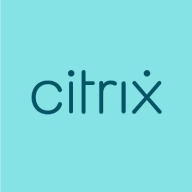

IBM PowerVM and Citrix XenServer are key competitors in the virtualization market. IBM PowerVM leads with its superior hardware integration and dynamic resource allocation, making it ideal for demanding environments, while Citrix XenServer is preferred for its cost-effectiveness and ease of management, especially for small to medium enterprises.
Features: IBM PowerVM supports high availability and seamless operation through Live Partition Mobility and shared processor pools, optimizing Oracle workloads. It excels in resource management, aiding database performance and ensuring system stability. Citrix XenServer offers open-source flexibility with robust management tools and the ability to live migrate, making it accessible and cost-effective for varied environments. Its wide guest OS support and ease of setup are attractive features.
Room for Improvement: IBM PowerVM could enhance its graphical interface and improve cloud integration, while reducing licensing costs. Users often cite the hardware and support expenses as significant. Citrix XenServer could benefit from improved user interfaces, management capabilities, and backup solutions, as well as increased compatibility with third-party integrations and more advanced high availability options. Both platforms need better pricing transparency.
Ease of Deployment and Customer Service: IBM PowerVM is primarily utilized in private clouds and offers excellent, responsive technical support crucial for major issues. Citrix XenServer focuses on hybrid environments, with decent support that could improve in global response coordination. Users admire IBM's extensive support network, while Citrix excels in straightforward deployment, especially advantageous for businesses new to virtualization technologies.
Pricing and ROI: IBM PowerVM, though requiring significant initial investment, offers high ROI in Oracle environments due to potential licensing cost reductions. Subscription models enhance pricing flexibility. Citrix XenServer is known for being cost-effective, with a free version available and premium features accessed via paid licenses, offering a balance of cost and functionality for businesses on tighter budgets.
My clients generally maintain their Citrix infrastructure without shifting, suggesting stability and reliable operation as Citrix XenServer is fully established.
The return on investment is substantial, though other platforms may offer a better ROI, primarily due to lower costs involved in setup and maintenance.
If calculated over a five-year period, IBM PowerVM is 30 to 40% more cost-effective than physical servers despite initial costs seeming high.
With valid licenses, we can access hotfixes, service packs, knowledge base, self-help tools, diagnostics, downloads, live chat, and phone support.
They do not provide adequate support for midsize businesses.
There appear to be very few engineers at Citrix who understand the problems.
IBM provides strong support.
IBM offers excellent customer support.
IBM's technical support is outstanding, with seamless global coordination and prompt resolutions.
Familiarity with Linux can enhance its performance and usability.
Citrix XenServer is definitely scalable enough.
An IBM server can handle up to sixty-four terabytes of RAM.
The product is scalable due to PowerVM's virtualization features, such as shared processor functionality and partition mobility.
I think IBM PowerVM uses a 'pay as you grow' model, allowing customers to scale their resources as needed.
It runs very stably.
I haven't had any significant issues with Citrix XenServer installations over the last 10-15 years.
The stability of IBM PowerVM is exceptional, as industry reports have named IBM Power and Z as the most stable platforms globally for 15 consecutive years.
Our clients in India using Power Servers have been running their servers for the last four to five years without any reboot.
The product operates reliably, and following IBM’s best practices ensures robust stability.
Although the product is technically competitive, it is not widely known or used due to poor marketing.
Citrix needs to improve the hypervisor, specifically in security and performance.
We can implement high availability and live migration with pools, along with security and backup to enable role-based access control for safer management.
We have a strong relationship with IBM, which aids decision-making in transitioning clients from mainframe to other platforms.
PowerVM should integrate some capabilities of VMware vCenter to improve its management features.
From a product perspective, I would like to see faster certification of open-source products on IBM Power Systems.
It is cheaper compared to its competitors.
Organizations save substantial money because competing solutions, such as VMware, cost double or triple.
The pricing and licensing policy of Citrix XenServer is not transparent and quite confusing.
Pricing is a concern in Argentina due to the higher cost of mainframe solutions.
PowerVM itself is free with the purchase of an IBM server.
While initially costly, the ROI over five years proves IBM PowerVM is cost-effective, resulting in a 30 to 40% reduction in costs compared to a physical setup.
The benefits from using Citrix include increased productivity, as users don't have to search for what they need to open.
The most valuable feature is transferring and sharing applications that allow users to move files between devices, including smartphones, tablets, and computers without needing USB cables, internet connections, or data usage.
It provides secure access to applications and resources, which is crucial for us and our clients.
Features like partition mobility enhance the machine's capabilities, making it an ideal tool for virtual environments with reliability, availability, and serviceability.
PowerVM excels in efficiently managing all systems and environments, including development, UI, and production.
It supports specific workloads, like Oracle and SAP HANA, much better due to its shared processor pool feature which reduces licensing costs.
| Product | Market Share (%) |
|---|---|
| Citrix XenServer | 4.9% |
| IBM PowerVM | 1.3% |
| Other | 93.8% |


| Company Size | Count |
|---|---|
| Small Business | 29 |
| Midsize Enterprise | 8 |
| Large Enterprise | 18 |
| Company Size | Count |
|---|---|
| Small Business | 13 |
| Midsize Enterprise | 5 |
| Large Enterprise | 20 |
Citrix XenServer provides virtualization with high availability and robust security, offering seamless VM migration and centralized management through XenCenter. Its expansive compatibility and integration enhance its appeal, particularly for SMBs.
Citrix XenServer is recognized for its user-friendly virtualization capabilities, facilitating dynamic scalability and efficient resource management. It supports a wide range of operating systems and integrates with Citrix solutions for improved operations. Businesses benefit from its affordability and ease of deployment. Despite its strengths, users seek improvements in third-party tool integration, network and backup management, and storage flexibility. High costs, limited Linux support, system complexity, technical support, and hardware compatibility remain challenges. An updated and intuitive interface is in demand for more seamless operations across platforms.
What are the key features of Citrix XenServer?In diverse industries, Citrix XenServer is leveraged for server and desktop virtualization, cloud automation, and infrastructure management. Many deploy it for virtual desktop infrastructure, application delivery, on-premises data centers, and to support Citrix application delivery like XenApp and XenDesktop. Enterprises migrating from VMware often find Citrix XenServer cost-efficient for these applications, serving as a main computing platform for enterprise applications including ERP systems and SQL Servers.
We monitor all Server Virtualization Software reviews to prevent fraudulent reviews and keep review quality high. We do not post reviews by company employees or direct competitors. We validate each review for authenticity via cross-reference with LinkedIn, and personal follow-up with the reviewer when necessary.